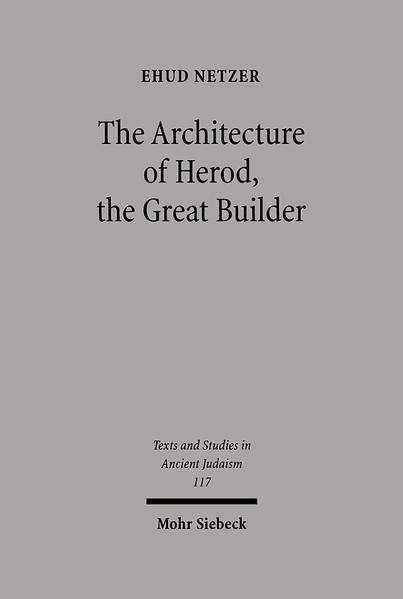NETZER,E., The Architecture of Herod, the Great Builder. Tübingen 2006.
The Architecture of Herod, the Great Builder. 1. Aufl. Tübingen, Mohr Siebeck, 2006.
24 x 17 cm. XIV, 443 S. Leinen. (Texts and Studies in Ancient Judaism, 117). ISBN 9783161485701.
Herod the Great was one of the famous builders of the classical world. Judaea, his kingdom, a crossroads between the Eastern Mediterranean countries, Mesopotamia, Arabia, and Egypt, symbolizes the transition between the Hellenistic and Early Roman periods as well as the climax of the Second Temple period, which witnessed the emergence of many religious and spiritual movements including Christianity. Beyond the influence of the matured Hellenistic architecture, the developing Roman architecture, and the local building activity of his predecessors, the Hasmonaeans, Herod’s buildings benefited from his analytical mind, creative imagination, and deep understanding of the process of building and planning. The consequences are outstanding structures such as Masada’s Northern Palace and Herodium’s cylindrical palatial fortress, and the peak of his achievements are Caesarea Maritima with its deepwater harbor and the rebuilding of Jerusalem’s Temple Mount. Having an architectural as well as an archaeological background, Ehud Netzer is able to highlight Herod’s personal involvement and contributions in his building projects. This book presents, in many aspects, the first comprehensive synthesis of Herod’s enterprises from archaeological and, mainly, architectural viewpoints.
Bestellnummer: 1685VB
Gebundener Ladenpreis: EUR 179,--

